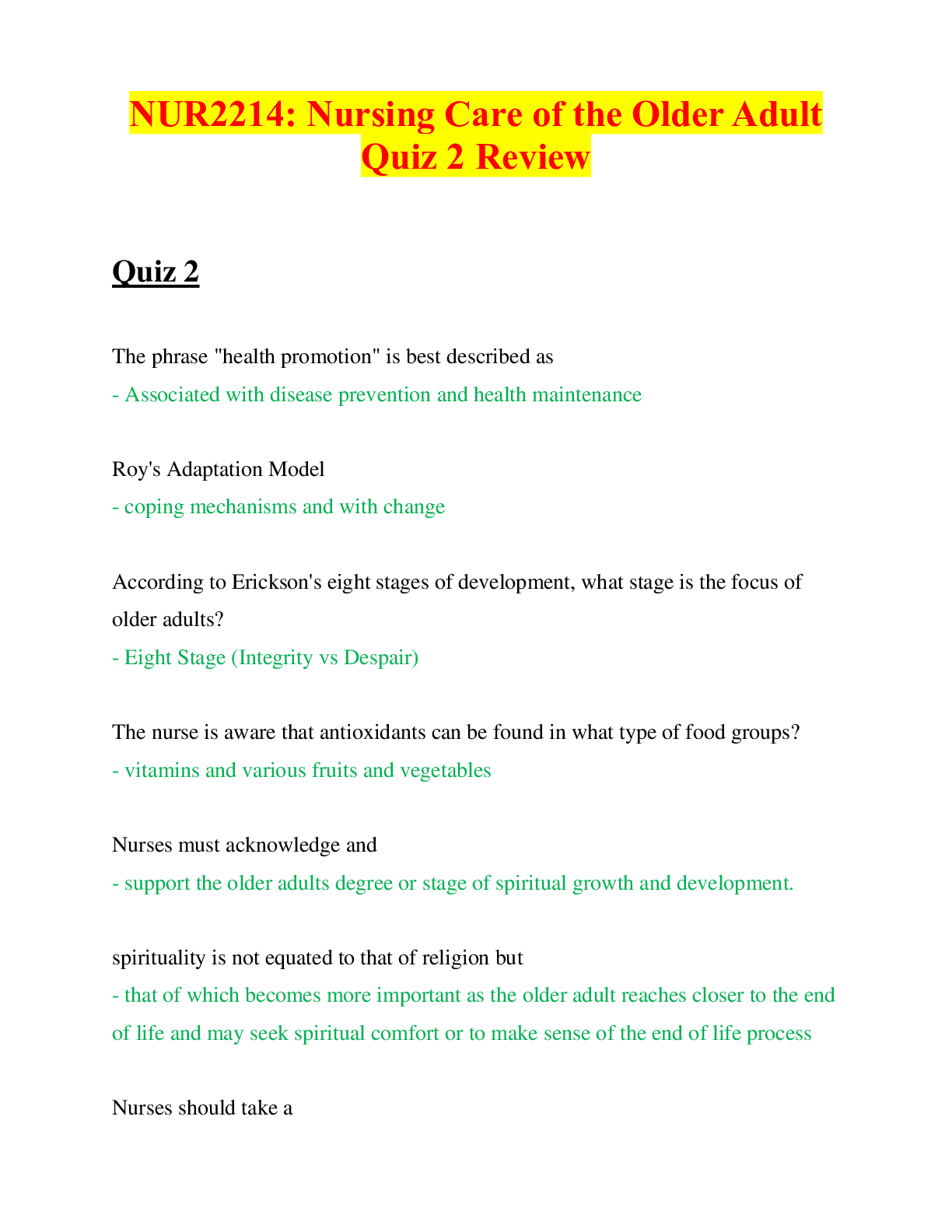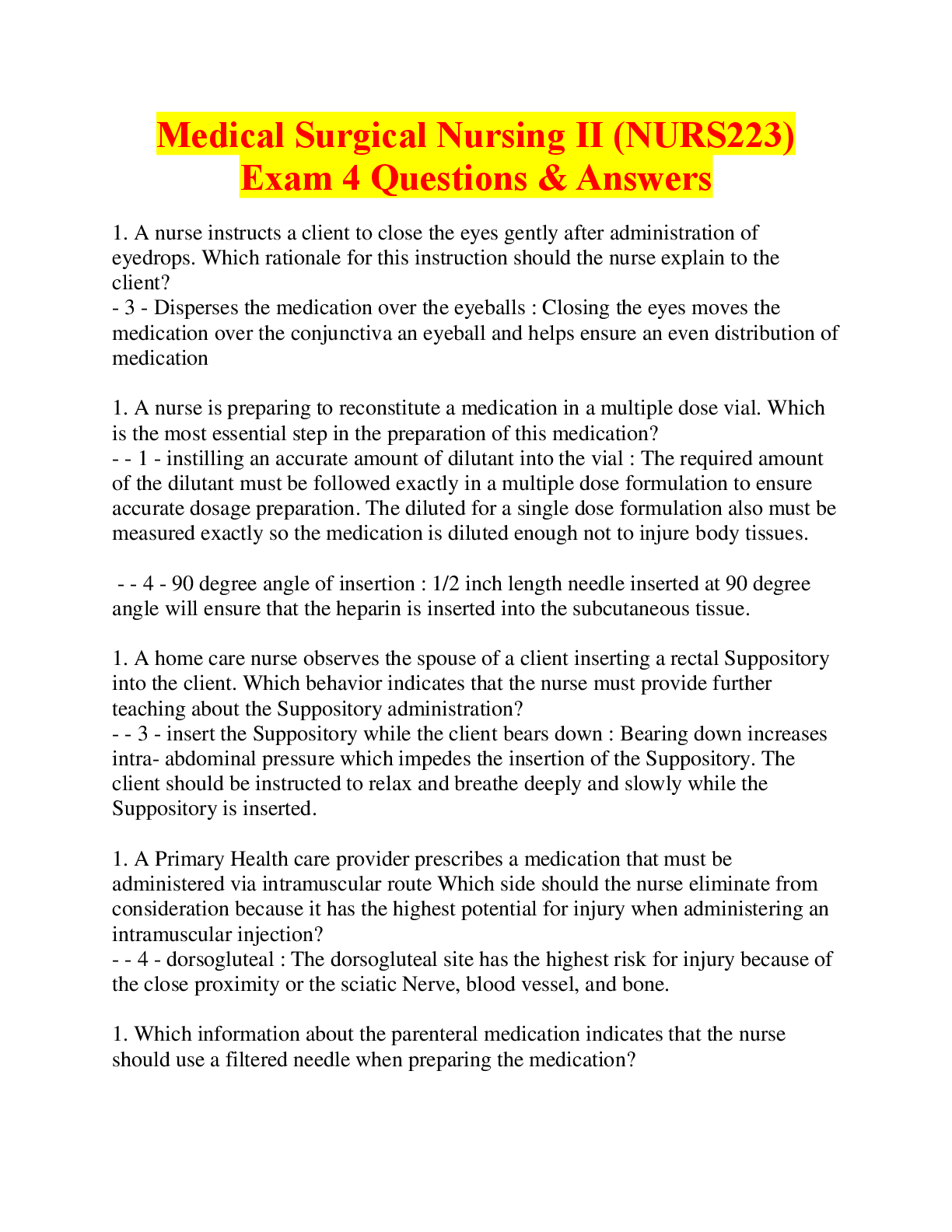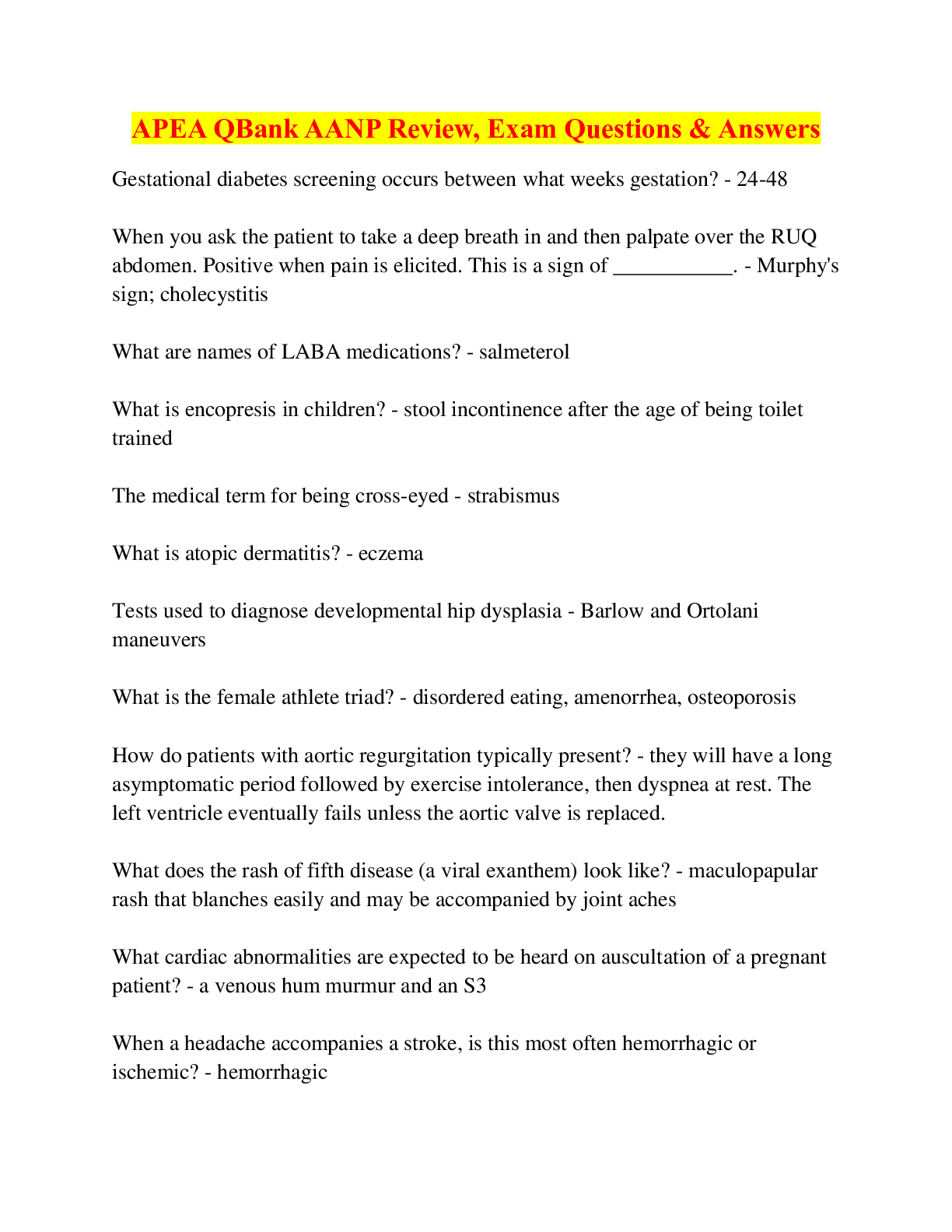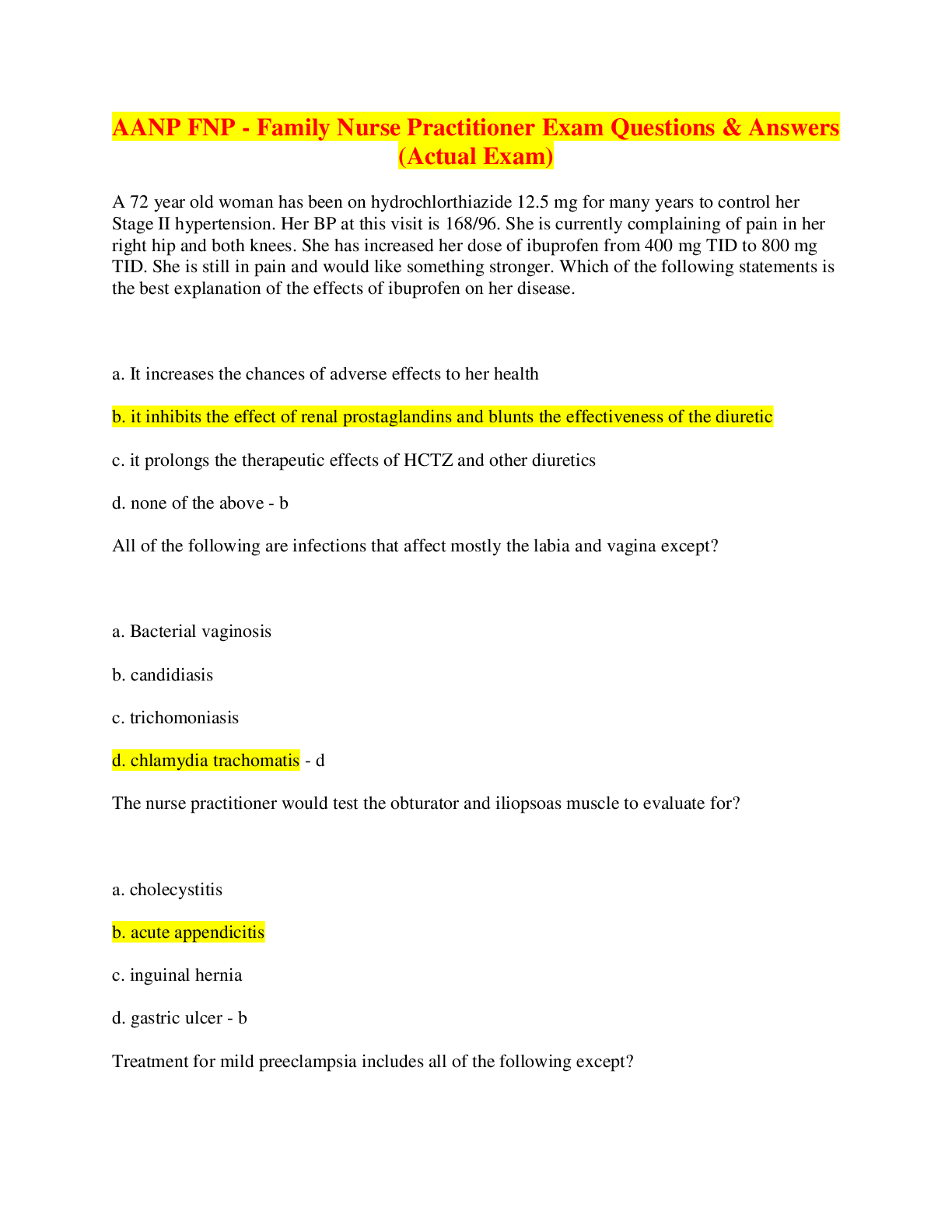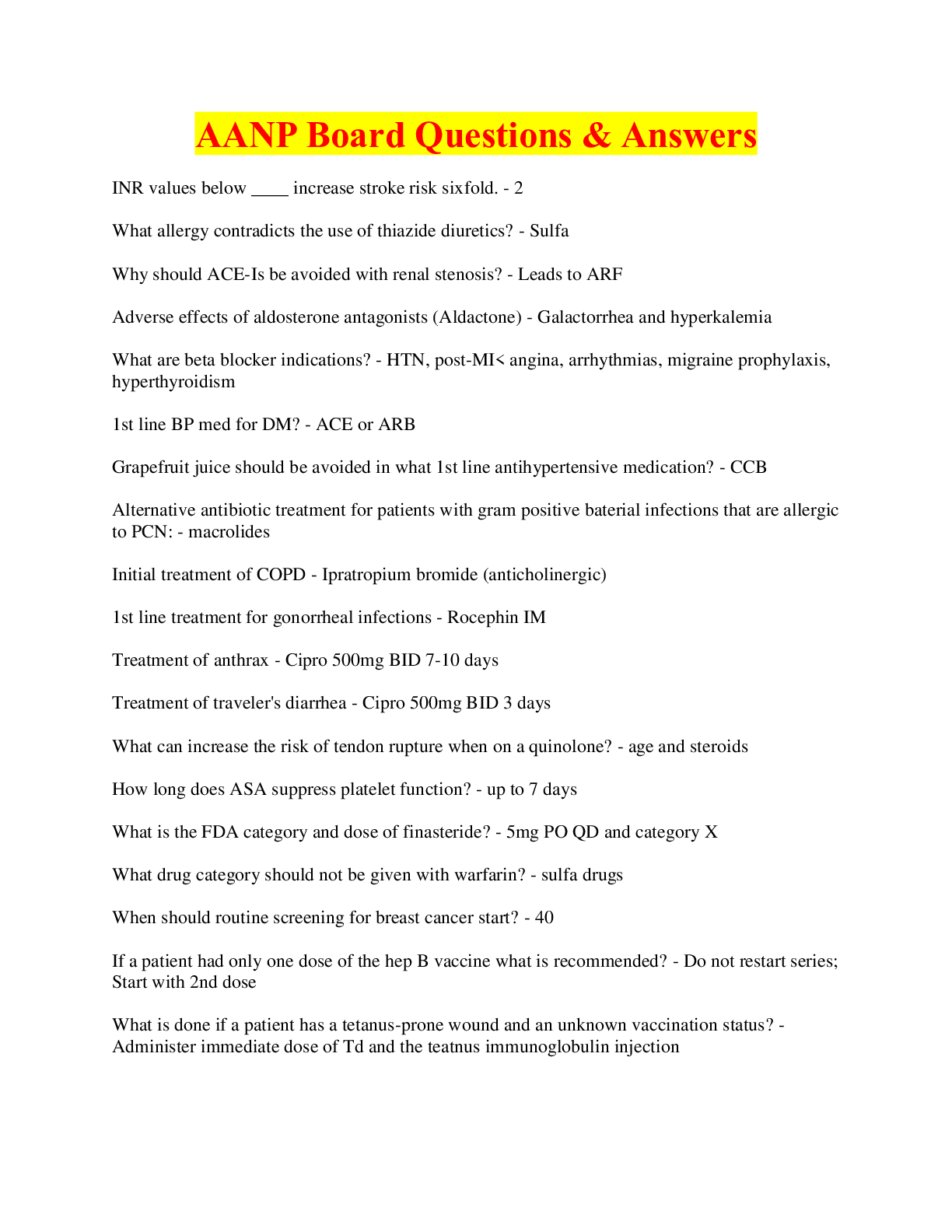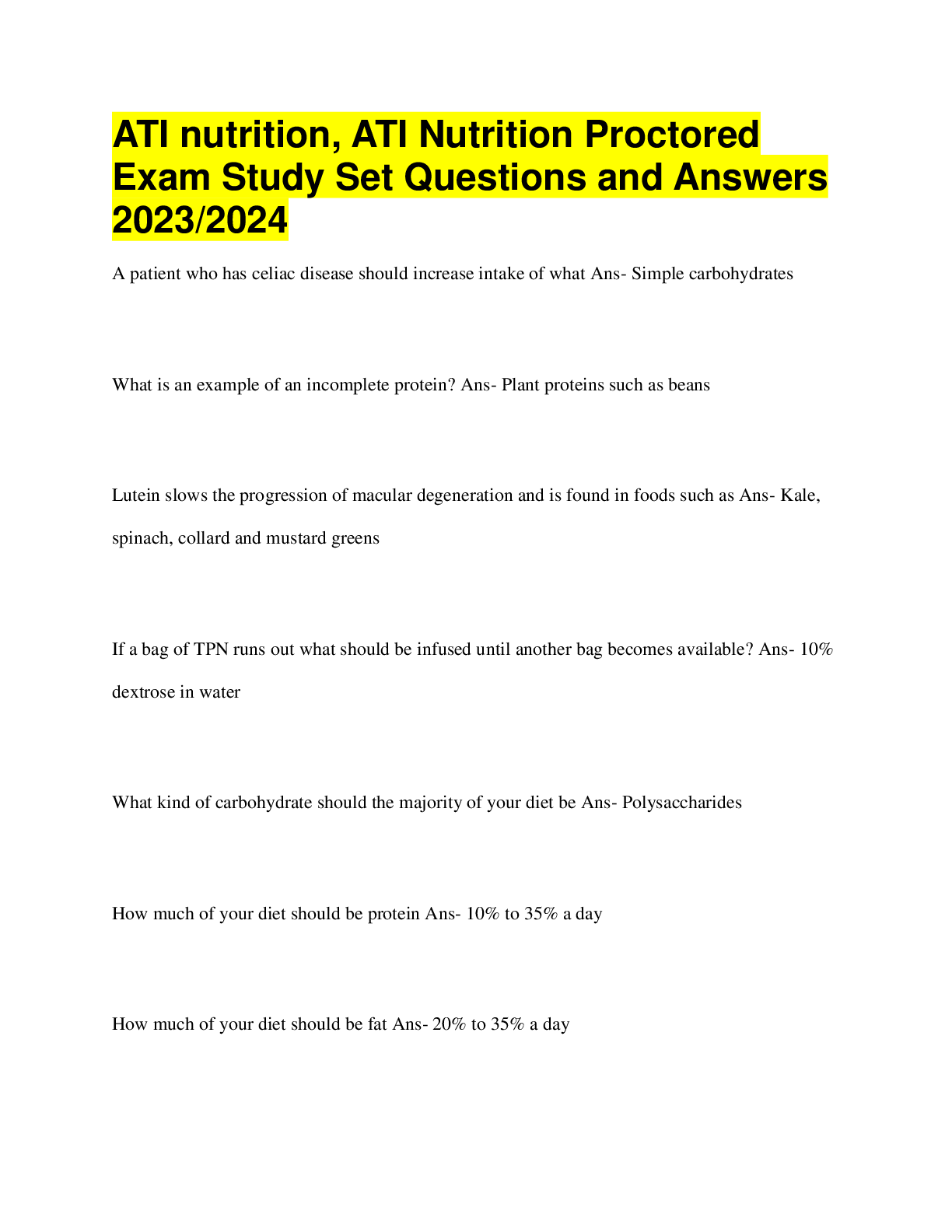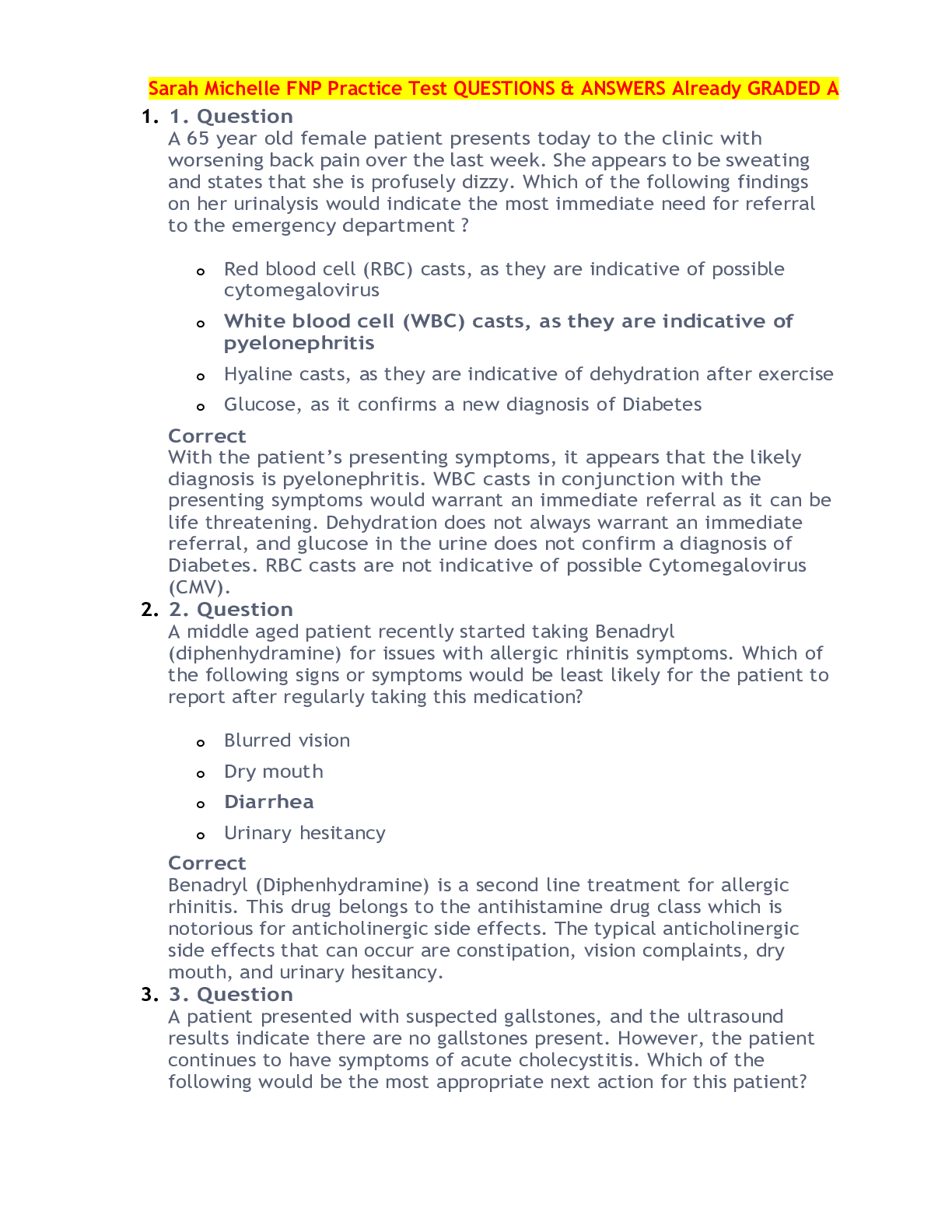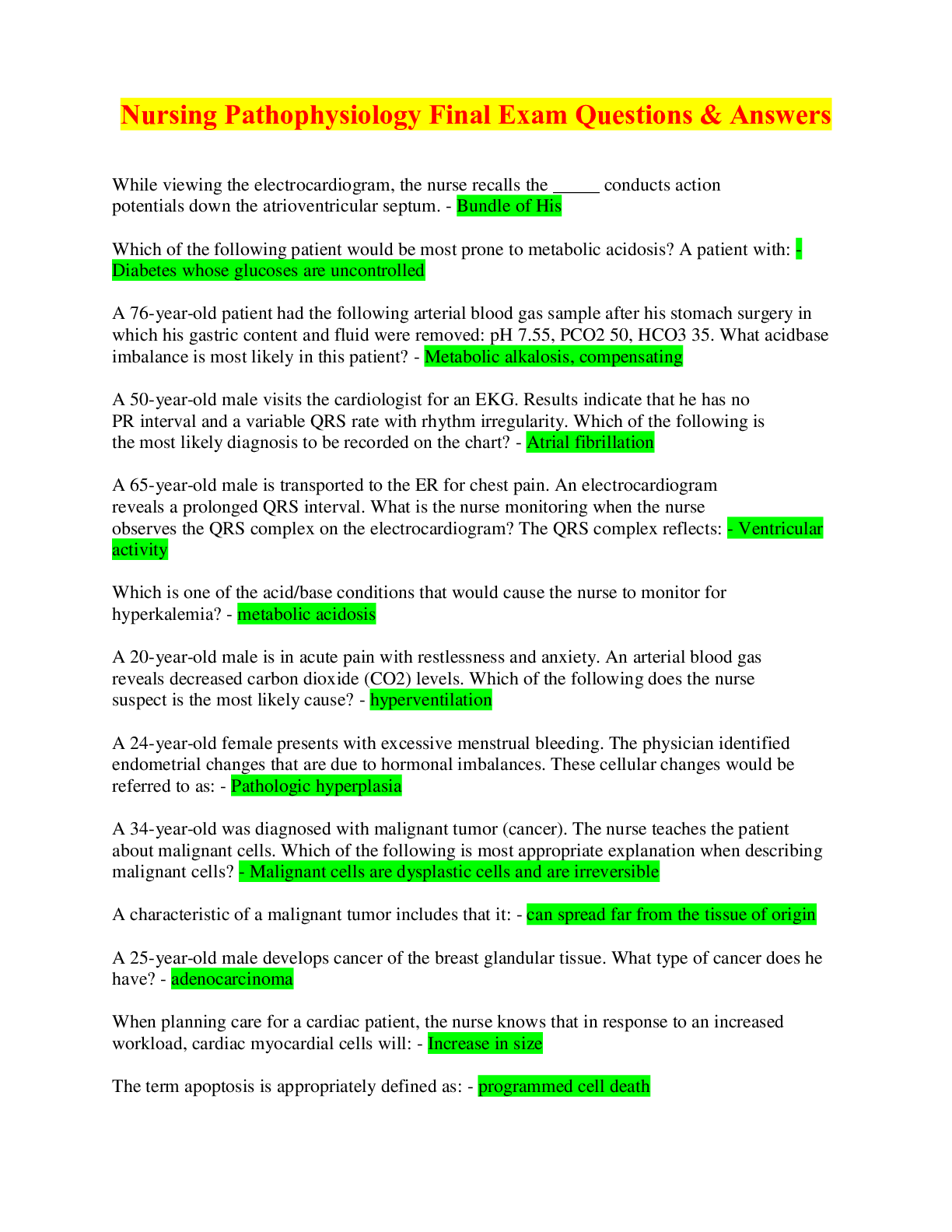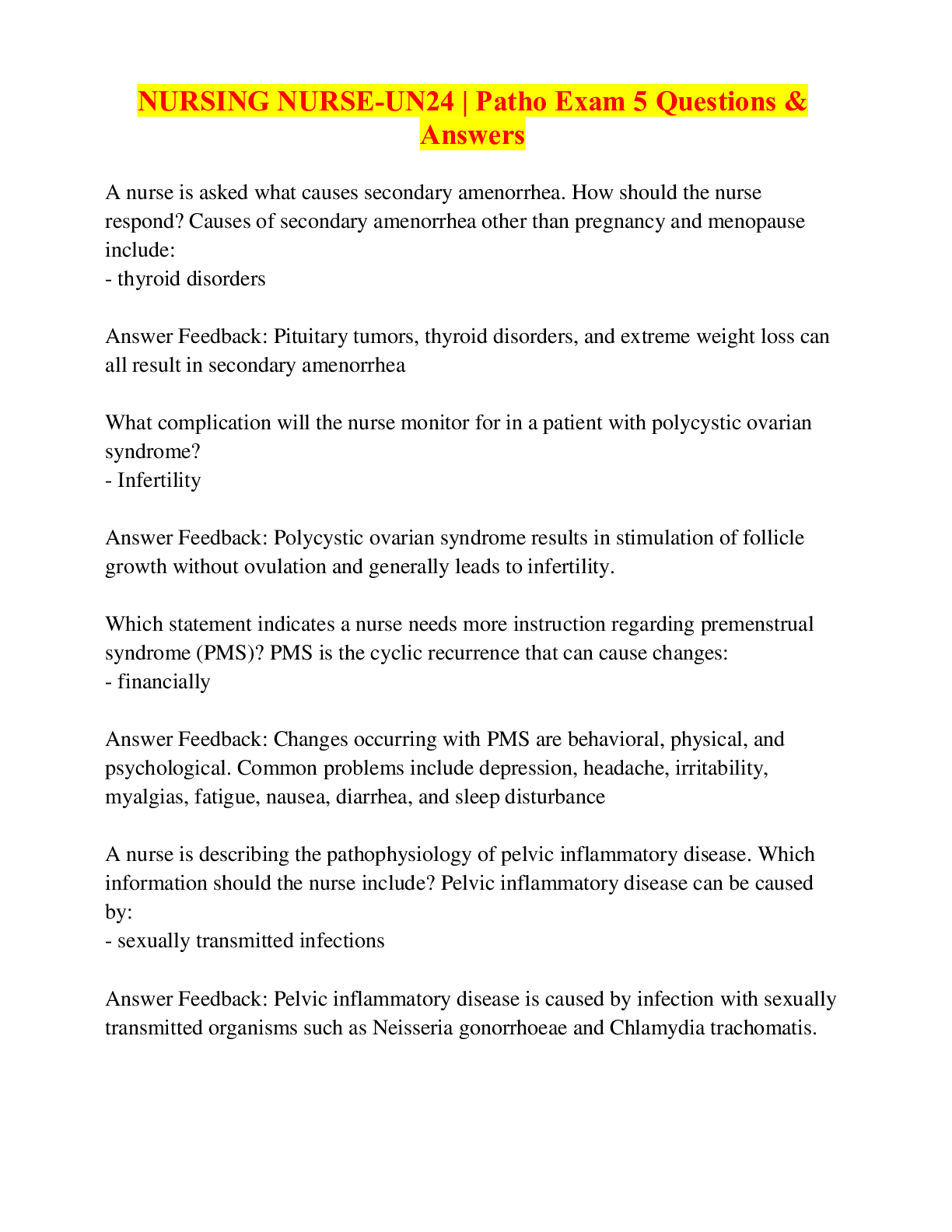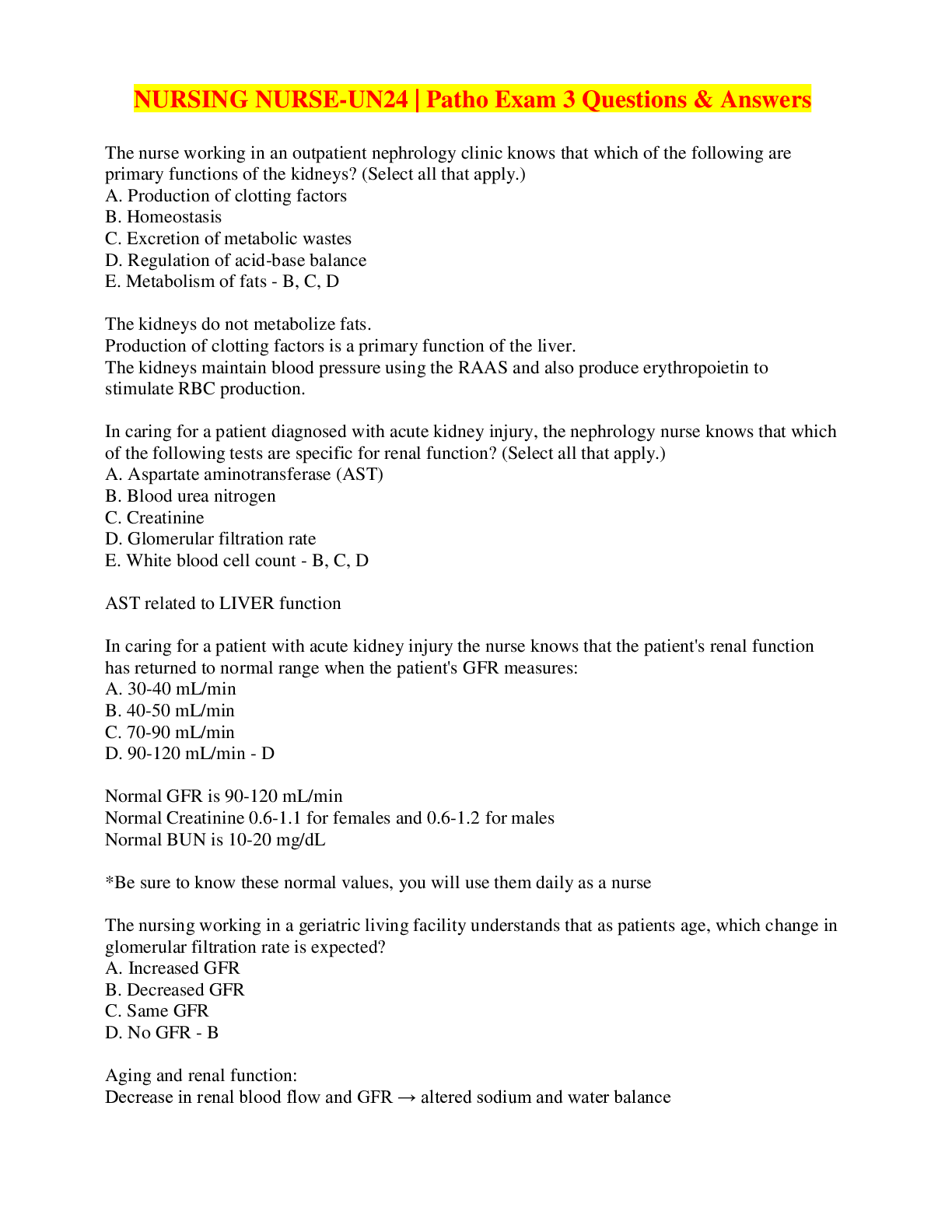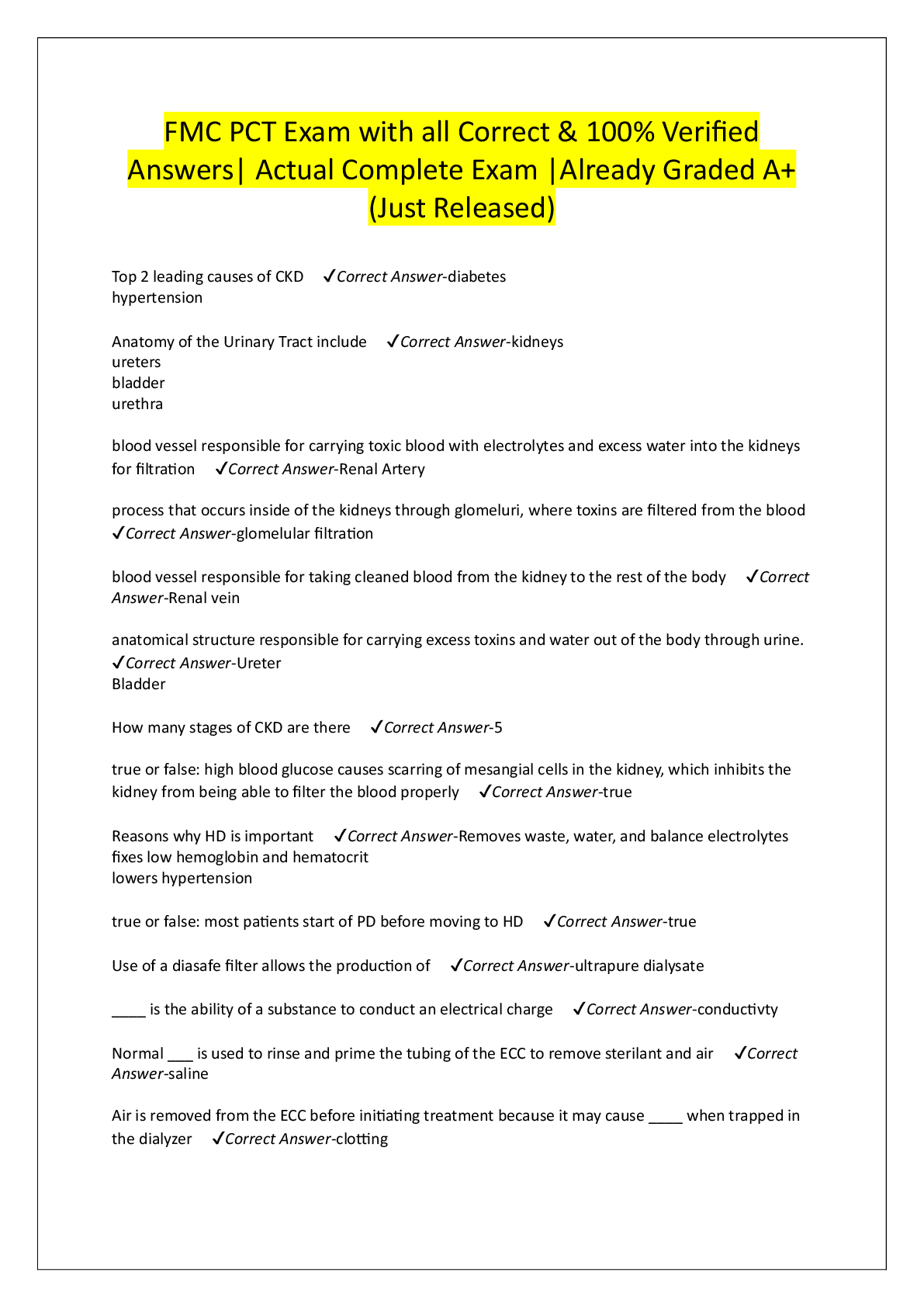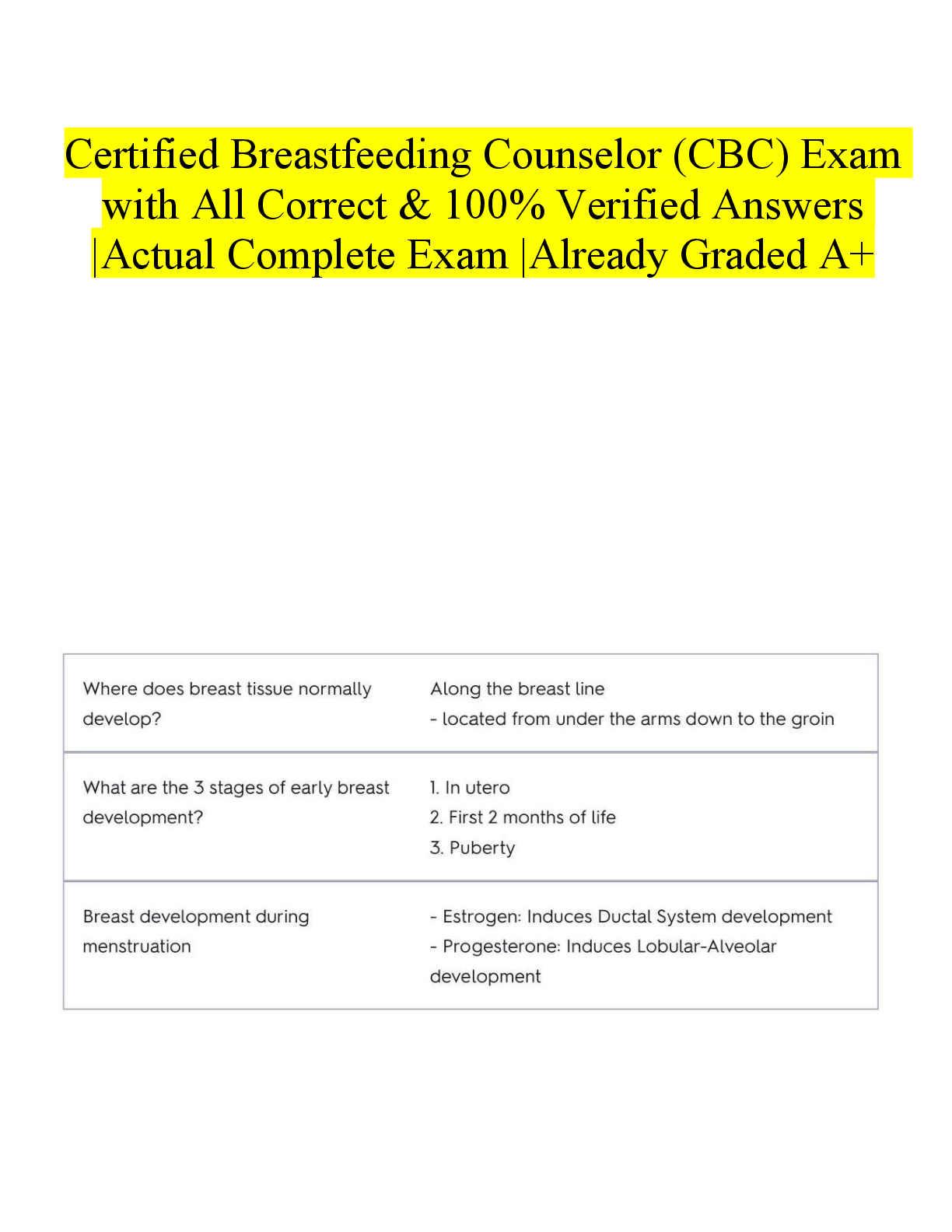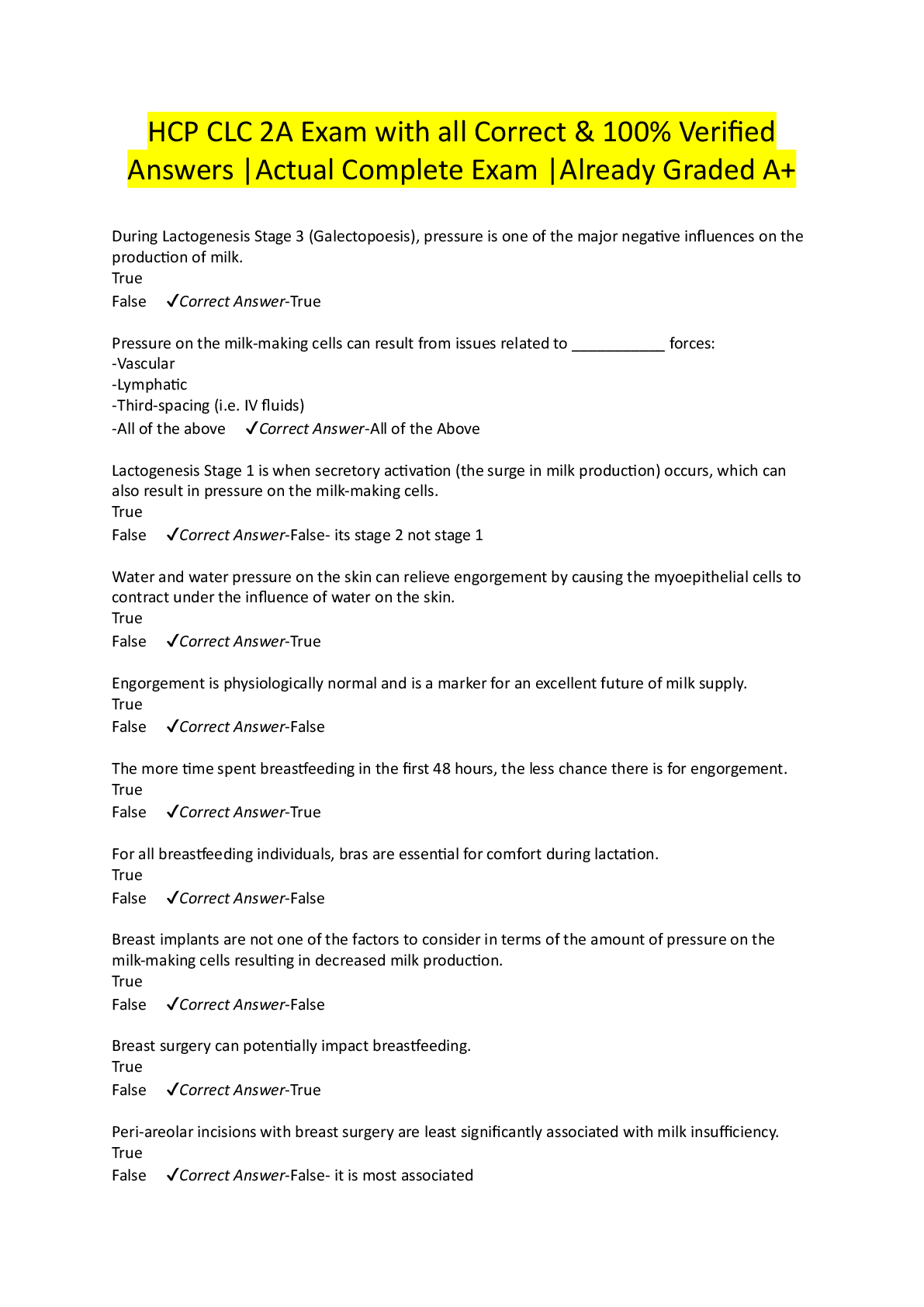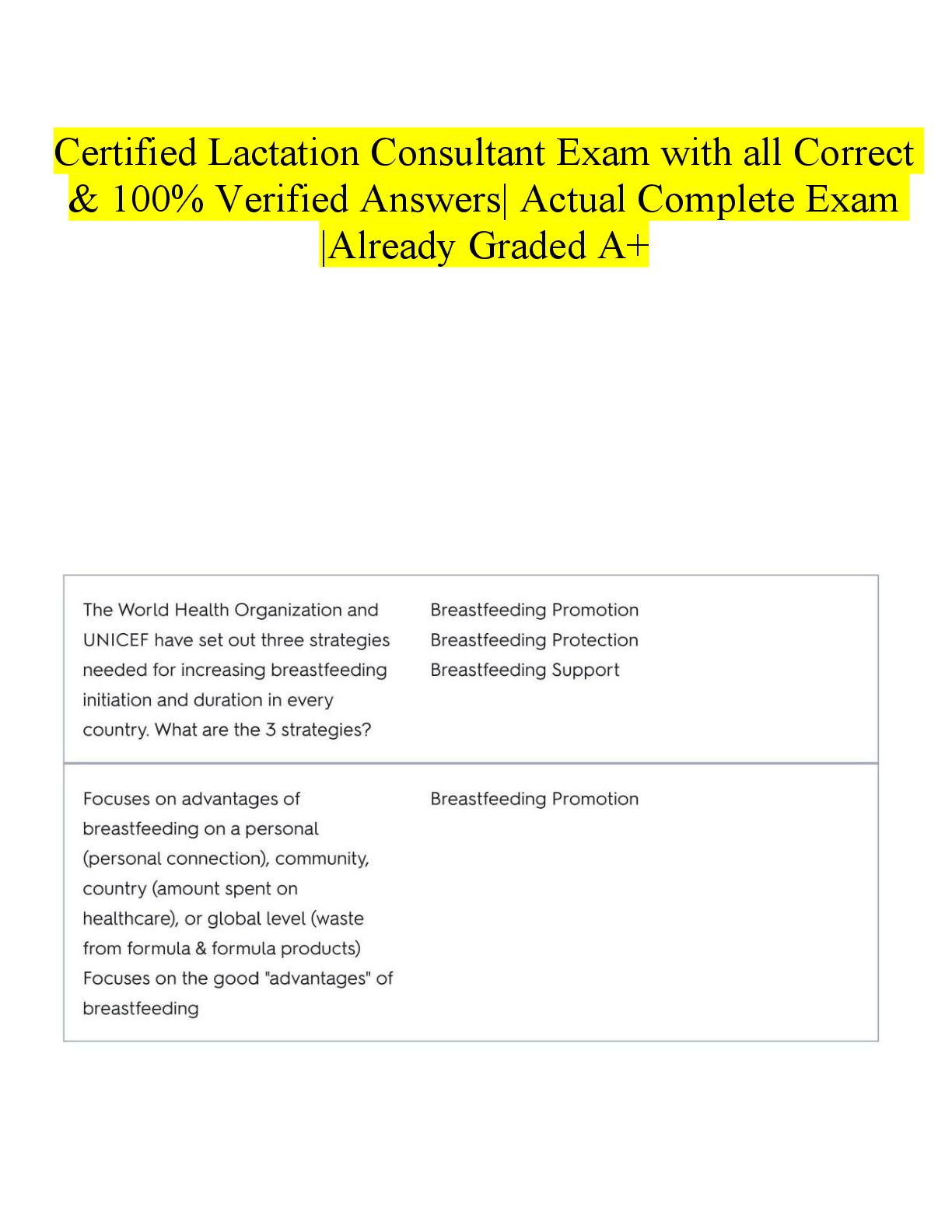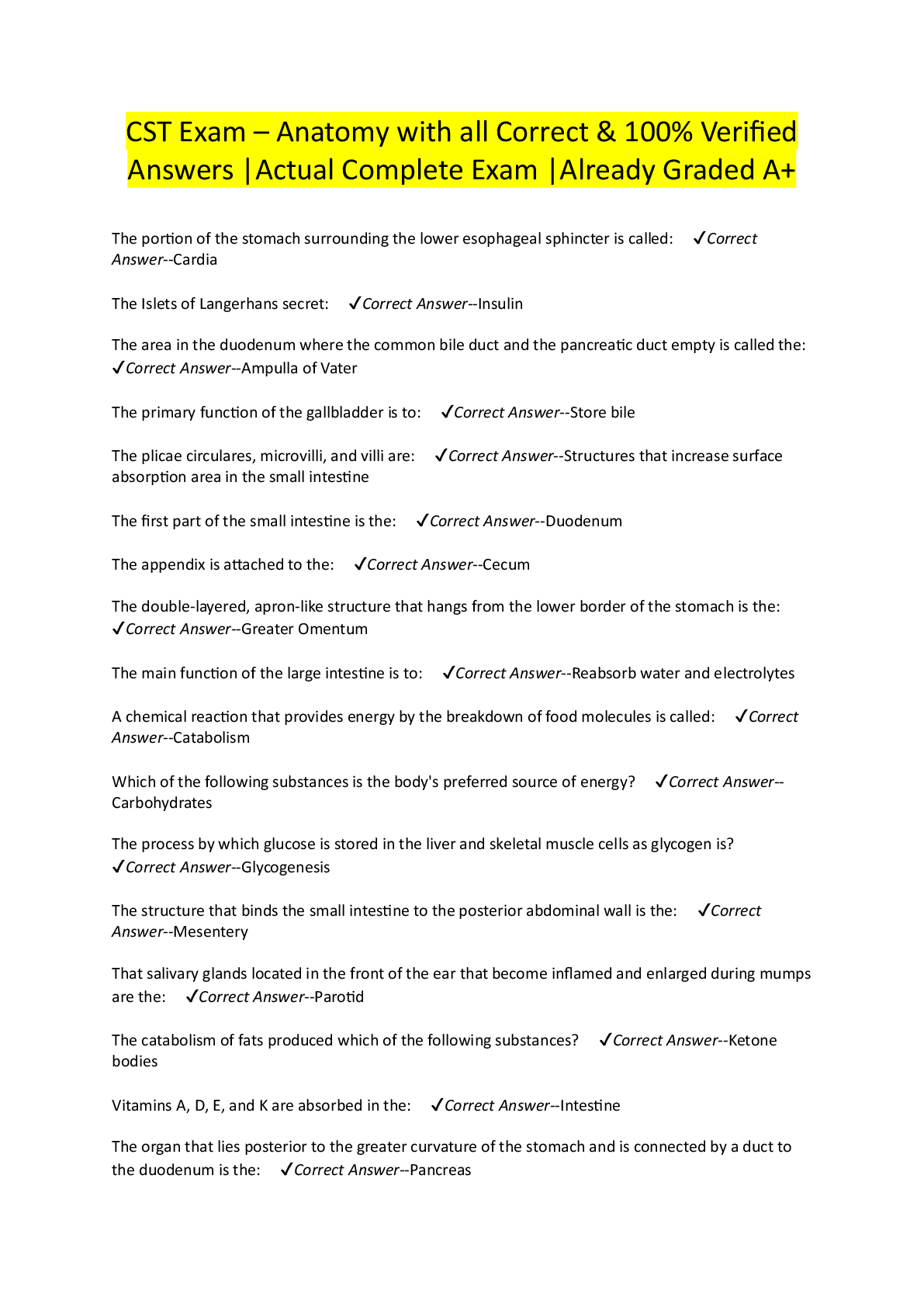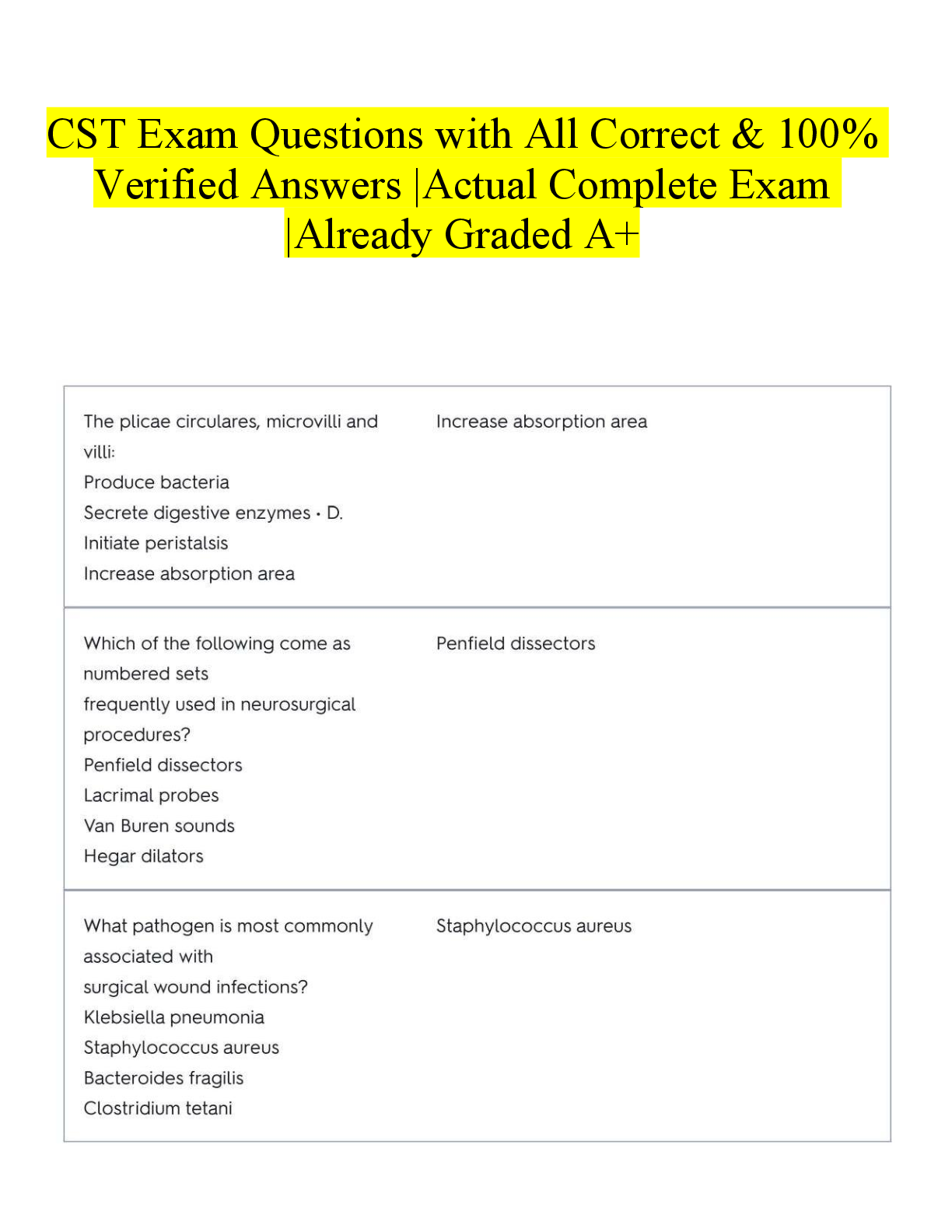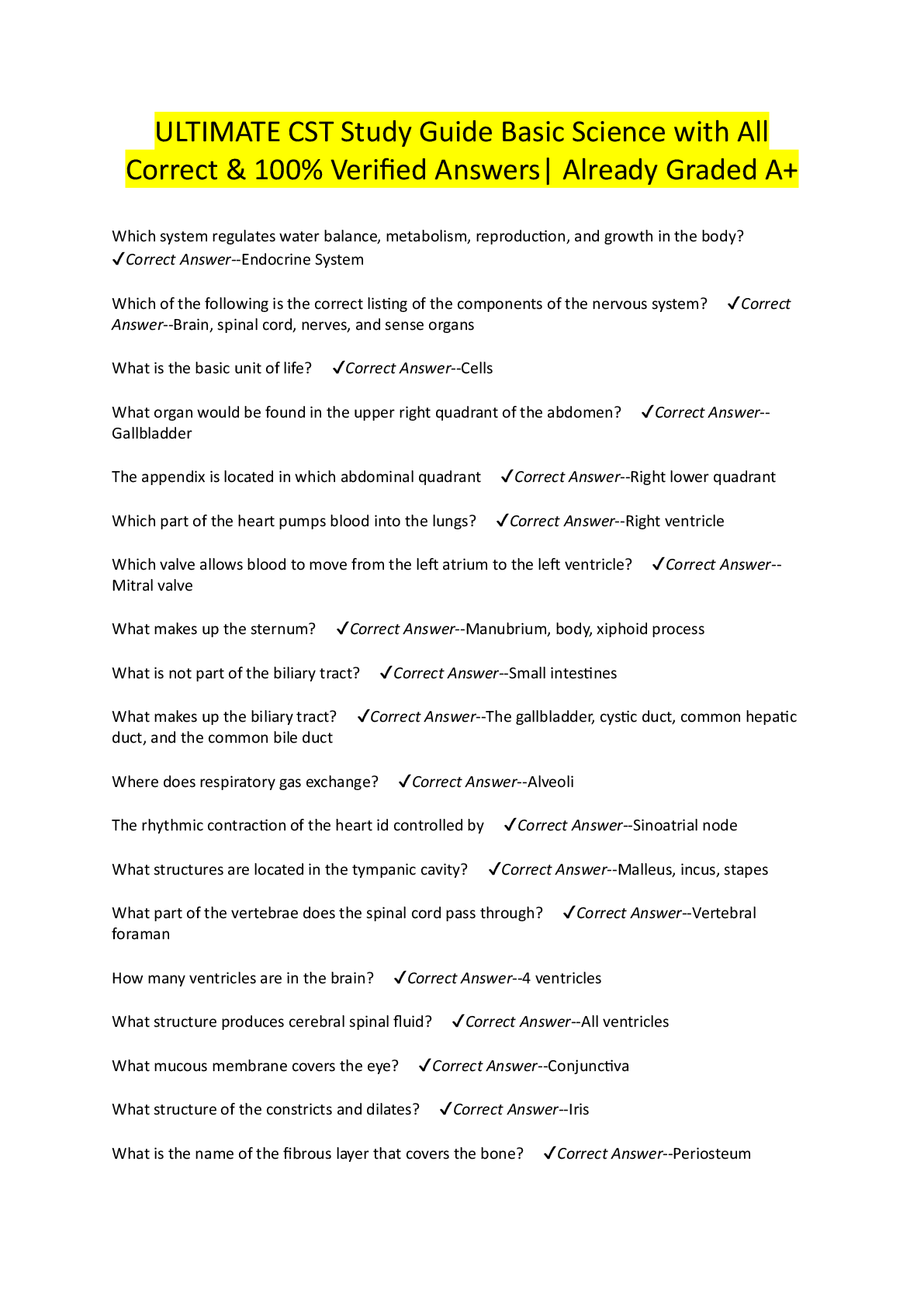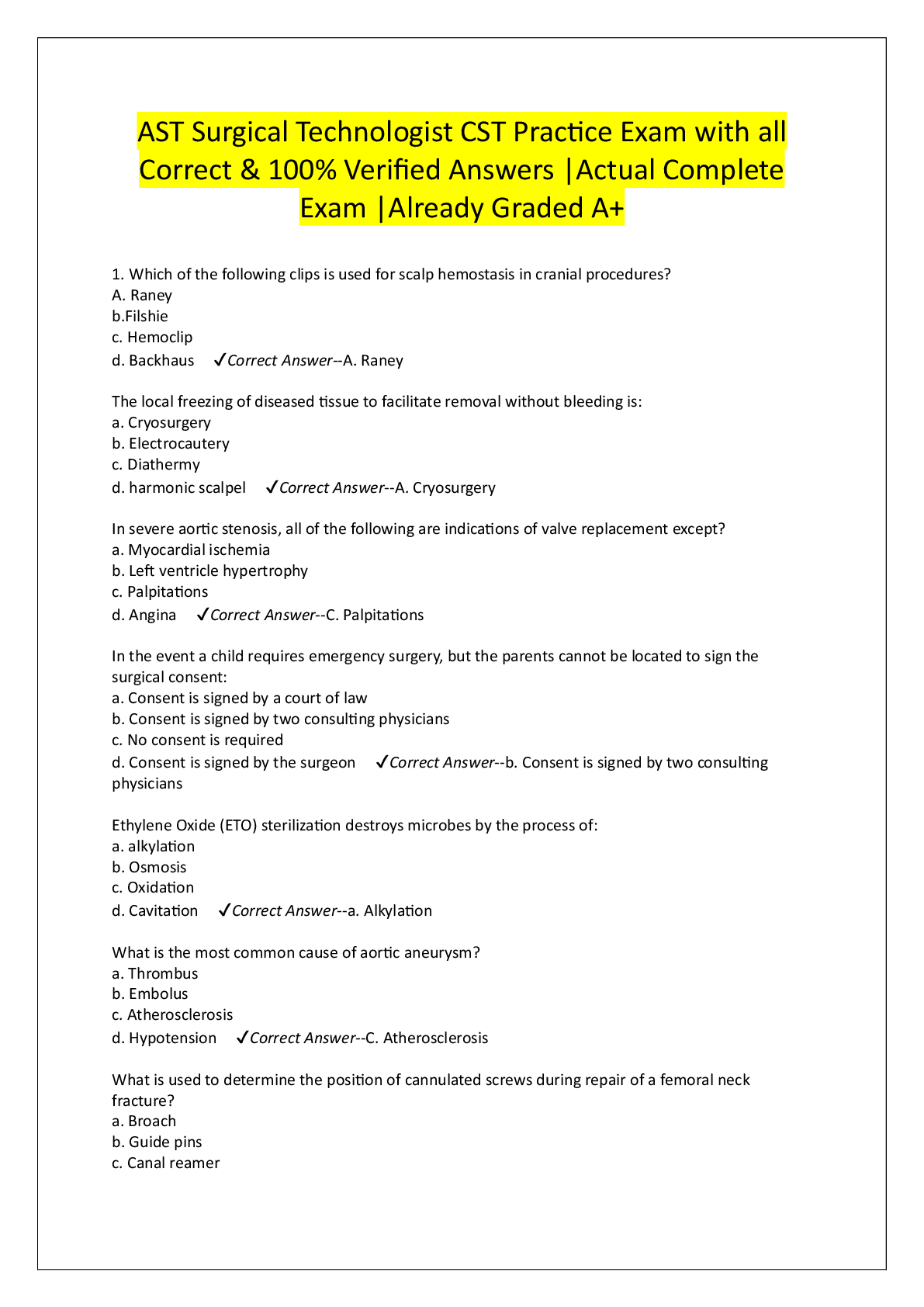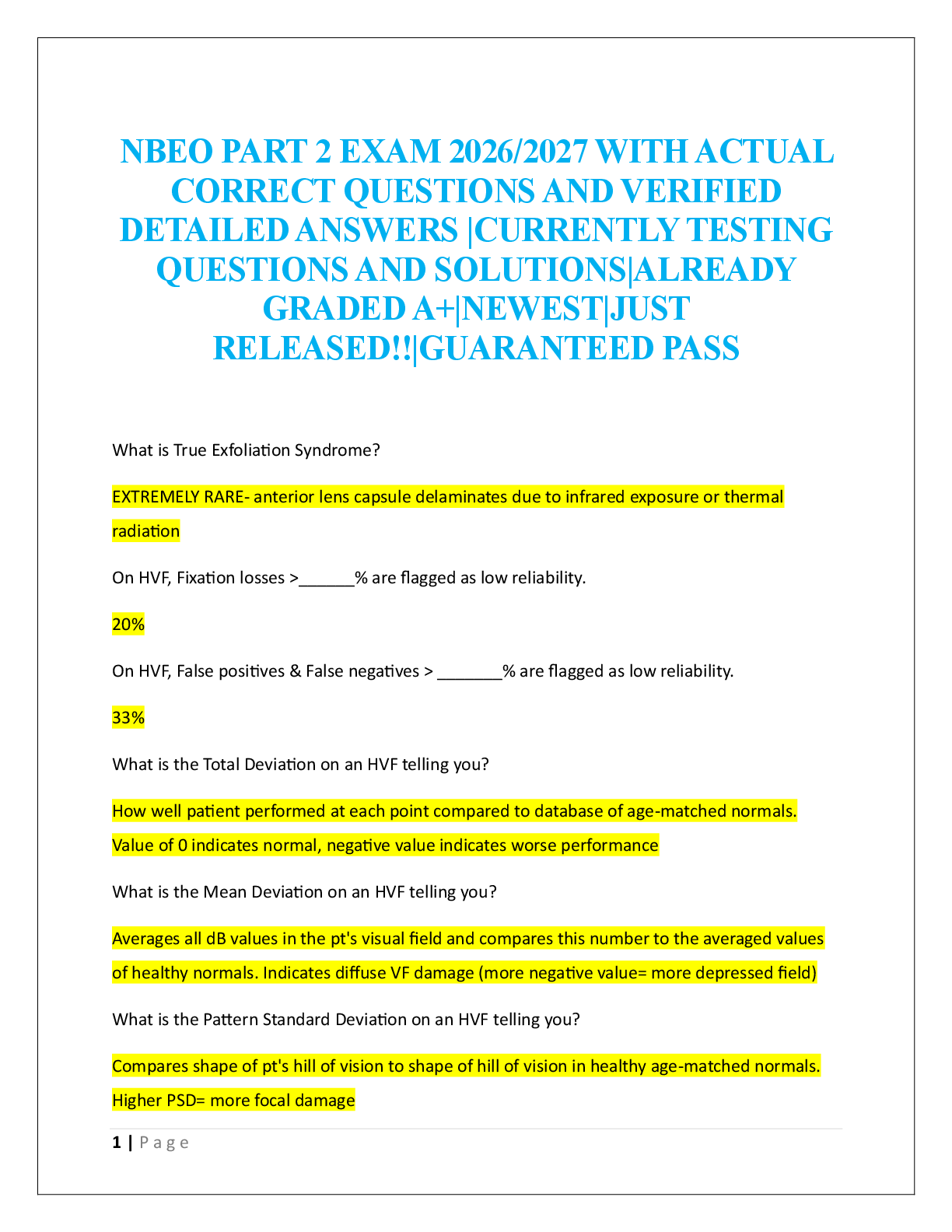PHTLS - Post Test, 8th Edition questions & answers, Graded
Document Content and Description Below
PHTLS - Post Test, 8th Edition questions & answers, Graded-Care of the trauma patient in the field is an evolving science and should be evidence-based. As lifelong learners, we must be prepared to ada ... pt our practices based on research. This is because research may lead to, what? - changes in our current practices (p.11) In trauma care, a 'principle' is defined as, what? - what needs to be done (p.34) In addition to oxygen, what is required to maintain the metabolic processes of life and energy production? - glucose You respond for a patient who has sustained a GSW to the right upper thorax. He is barely responsive, pale, and diaphoretic. What device is most appropriate for transport? - scoop stretcher Units responding to a motor vehicle accident on the highway should consider what, as part of their pre-arrival assessment? - weather conditions The most appropriate airway maneuver for trauma patients is what technique? - jaw thrust maneuver Endo-tracheal in-tubation is a technique that requires, what? - substantial training, to maintain proficiency What indicates that a trauma patient is having trouble breathing? - the patient's breathing is noticeable A patient presents with, a blunt trauma injury to the chest. On exam, he has absent breath sounds on one side of his chest and respiratory distress. Which additional sign would indicate that the patient has a tension pneumo-thorax? - hemo-dynamic compromise (proper blood flow is being prevented) In addition to direct pressure, tourniquets, and immobilizing fractures, what is considered most effective when controlling hemorrhage? - hemo-static agents What is a preventable cause of secondary brain injury? - systemic hypoxia You're called to treat a patient who was knocked unconscious when he slipped and fell on a wet floor striking his head. It is now several hours later and he is awake but confused, does not recall the incident, and is vomiting with a headache. What injury is he most likely to have suffered? - concussion What findings would indicate the need for immobilization when using a selective spinal immobilization protocol? - pain or tenderness along the spine [Show More]
Last updated: 3 years ago
Preview 1 out of 6 pages

Buy this document to get the full access instantly
Instant Download Access after purchase
Buy NowInstant download
We Accept:

Reviews( 0 )
$8.50
Can't find what you want? Try our AI powered Search
Document information
Connected school, study & course
About the document
Uploaded On
Apr 28, 2022
Number of pages
6
Written in
All
Additional information
This document has been written for:
Uploaded
Apr 28, 2022
Downloads
0
Views
129

